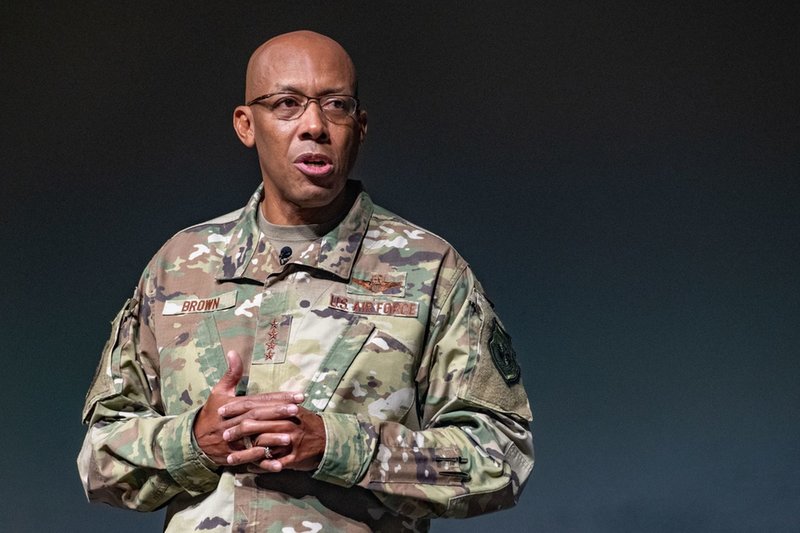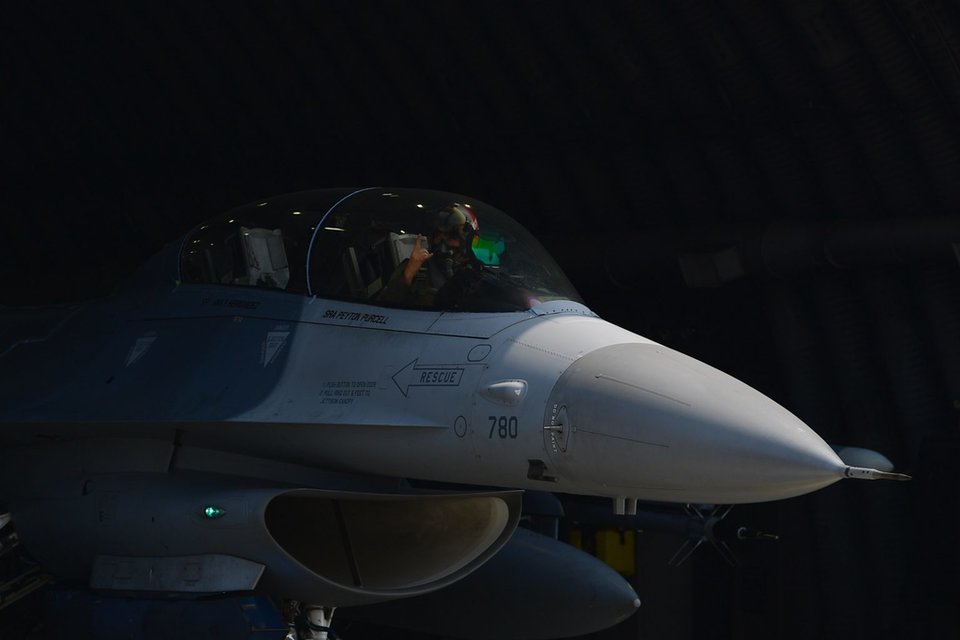Comment
Reports of F-35’s demise are greatly exaggerated
The US Air Force Chief of Staff has countered claims that the F-35 has ‘failed’ as the US Air Force looks into alternatives for replacement of the F-16. Harry Lye reports.
During a press briefing in late February, US Air Force Chief of Staff General Charles Q. Brown, Jr countered claims that the US Air Force’s interest in buying a clean-sheet design fighter to replace the F-16 indicates the F-35 project has failed.
Brown said the aircraft was the ‘cornerstone’ of the US tactical air capability and compared it to a Ferrari, saying he wanted to ‘moderate’ how the F-35 was being used. The US Air Force (USAF) aims to order a total of 1,763 F-35As; the model was originally intended as a replacement for the F-16.
Brown said: “You don’t drive your Ferrari to work every day, you only drive it on Sundays. This is our ‘high end’ [fighter], we want to make sure we don’t use it all for the low-end fight.”
Brown’s comments about a new F-16 replacement and the recent acquisition of the F-15EX have been seen by many as a signal that the F-35 project has failed, however, it can also be seen as an acknowledgement that the Lockheed Martin stealth jet is not a magic bullet that will solve all of the USAF’s problems.

// US Air Force Chief of Staff Air Force Chief of Staff Gen. Charles Q. Brown, Jr. Credit: US Air Force.
A new direction for F-16 replacement?
Royal United Services Institute (RUSI) research fellow and editor of RUSI Defence Systems Justin Bronk told us that Brown’s interest in exploring options for a ‘fifth-generation minus’ clean-sheet design to replace the F-16 was a recognition that the F-35 is not an affordable replacement for the entire US Air Force fleet due to its operating costs.
Bronk added: “However, the aircraft itself is performing extremely well in exercises and frontline deployments – far outstripping any other existing option, and acquisition costs are stable at around $80m per aircraft – lower than many ‘4.5-generation’ rivals.”
During a media roundtable, Brown refuted claims the F-35 was a ‘failure’, saying the fighter was the ‘cornerstone’ of the US Air Force’s tactical air capability.
“The F-35 is the cornerstone of what we’re pursuing,” Brown said. “Now we’re going to have the F-35, we’re getting it out, and we’re going to have it for the future.
“The reason I’m looking at this fighter study is to have a better understanding of not only the F-35s we’re going to get, but the other aspects of what complements the F-35. And looking ten to 15 years out, because I want to be able to understand, as I start trying to make decisions, what we want to look like as an air force 15 years from now, with the F-35 as the cornerstone of our capability.”
What will TacAir mean for the F-35?
When asked if the ongoing tactical air (TacAir) study would make a recommendation on the number of F-35s the US should look to acquire as its final fleet, Brown said: “What I want to do is do the study, and right now the number is the number that we’ve already laid out [1,763 F-35As]. And we’ll look at the study and what I’ve asked the team to do is give me options on how to take a look at this because I want to make sure we have the right capability.
Bronk added that if the F-16 replacement does go ahead, the F-35A would still form the ‘backbone’ of the US Air Force’s tactical fighter jet capability when it comes to high-end operations in contested areas in the coming decades. However, he added this would likely see the eventual fleet size shrink from the proposed 1,763 to one of between 600 and 1,000 jets.
Even this figure, Bronk added, was “still a huge programme of record” that would easily generate sustained investment from the US in capability growth throughout the rest of the aircraft’s service life for both the US and allied users of the aircraft.
The US currently has two ongoing tactical air studies assessing, in Richardson’s words, what ‘that ultimate fighter fleet would look like’.
In response to the same question, the US Air Force’s top uniformed acquisition officer, Lieutenant General Duke Richardson, said: “When Chief Brown was talking about that he was talking about the age of the fighter fleet and he was talking about the average age being 29 years of age. And so, he talked about it from that context; one of his priorities is actually digital acquisition.
“We’ve got a Chief here who’s fully embracing this. And so, he’s got that in his mind, he’s seeing it applied to things like Next Generation Air Dominance, to Ground Based Strategic Deterrent, to T-7 and to some other things. I mentioned some of the weapons programmes that were starting. He’s thinking about, is there a way to refresh my fighter fleet quicker? The other part that he mentioned is this idea of the TacAir study.”

// The F-35 was originally intended to replace the F-16, but the US Air Force is exploring alternative options. Credit: US Air Force
The US currently has two ongoing tactical air studies, one of which is being conducted by the USAF and the other through the Joint Staff, assessing, in Richardson’s words, what “that ultimate fighter fleet would look like”. Richardson said he wouldn’t go into too much detail as the studies are in their early stages and results could be expected in “a couple of years”.
Bronk said General Brown’s alternative approach would likely run into challenges in trying to create a “clean sheet relatively low-observable multirole fighter with open software architecture” for less than $80m – the current unit cost of an F-35A.
Bronk added: “ It would also require Congress to authorise another clean-sheet fighter programme alongside the US Air Force’s ongoing efforts to replace its KC-10 tankers with the troubled KC-46, replace the B-2 and B-1 bombers with the new B-21, supplement the F-22 fleet with the new Next Generation Air Dominance, introduce highly-automated UAVs to supplement fighters in combat via the Skyborg programme, and replace the F-15C/D air superiority fleet with new F-15EXs.”
NGDA versus F-35?
Development of the US Air Force’s Next Generation Air Dominance (NGDA) has also been seen by some as a threat to the F-35; however, Brown said the service did not plan to divert funding from the F-35 programme to pay for the future fighter.
Commenting on NGAD and the F-35, Brown said: “As far as NGAD versus F-35 goes, we’re not going to take money from F-35 to do NGAD. We’re going to look at some of the other parts of the fighter force to take a look at NGADD, to help fund NGAD. [We] want to keep the F-35 on track, but also look at NGAD.”
When I think about that capability, I’m also thinking about the threat that we see today and the threat we’re projecting for the future.
NGAD made a stunning entrance to the public spotlight last summer when the USAF’s former Assistant Secretary of the Air Force for Acquisition, Technology and Logistics, Will Roper, announced the service had already built and flown a full-scale prototype of the aircraft.
Brown added: “Part of this is, you look at some of the older platforms we have, and this is why I wanted do this study. As we bring in NGAD, and we start bringing down some of the older aircraft – one, to help get our average age down, but two, to make sure we don’t have a big gap in capability as we go forward as well.
“When I think about that capability, I’m also thinking about the threat that we see today and the threat we’re projecting for the future. I want to have an understanding, which is why the study to me is important, so we don’t just build something without thinking about the threat but also thinking about the complete fighter force. Not just the F-35 or NGAD.”
// Main image: Two F-35’s bank after receiving fuel. Credit: US Air Force